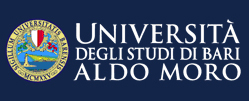 |
PhD program in
|
|
Genetics and Molecular and Structural Evolution
|
|
|
Coordinated by Prof. Mariano Rocchi
|
|
Anthropological and molecular aspects of human biodiversity, M.Tommaseo |
The history of human migrations from Eastern Indonesia to New Guinea is studied through mtDNA and Y Chromosome polymorphisms analysis, taking into account climatic and geomorphological events that shaped settlement and adaptation patterns in this region in the Pleistocene. Animal introduction and domestication is also considered - through molecular variability of Sus Scrofa – as an indicator of human migrations in New Guinea
Published papers (selection) (click to download the pdf)
Mona S, Tommaseo-Ponzetta M, Brauer S, Sudoyo H, Marzuki S, Kayser M: Patterns of Y-chromosome diversity intersect with the trans-New Guinea hypothesis. Molecular biology and evolution 24:2546-2555 (2007)
Mona S, Randi E, Tommaseo-Ponzetta M: Evolutionary history of the genus Sus inferred from cytochrome b sequences. Molecular Phylogenetics and Evolution 45:757-762 (2007)
Accetturo M, Santamaria M, Lascaro D, Rubino F, Achilli A, Torroni A, Tommaseo-Ponzetta M, Attimonelli M: Human mtDNA site-specific variability values can act as haplogroup markers. Hum Mutat 27:965-974 (2006)
Kayser M, Brauer S, Weiss G, Schiefenhövel W, Underhill P, Shen P, Oefner P, Tommaseo-Ponzetta M, Stoneking M: Reduced Y-chromosome, but not mitochondrial DNA, diversity in human populations from West New Guinea. Am J Hum Genet 72:281-302 (2003)
